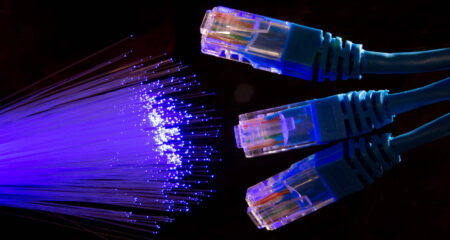 Internet connectivity underpins everything in our digital age and plays a vital role in our economy — from businesses keeping their systems live and responsive, to mines working in remote areas and households that need to support work-from-home and remote schooling.
Internet connectivity underpins everything in our digital age and plays a vital role in our economy — from businesses keeping their systems live and responsive, to mines working in remote areas and households that need to support work-from-home and remote schooling.
The internet, a global network of interconnected computers, devices and databases, makes it possible for us to access information and communicate from anywhere in the world. Wi-Fi, on the other hand, allows us to connect our devices to the Internet. A Wi-Fi connection can come from fibre, LTE, wireless or a satellite connection.
Consider for a moment what happens when there is no connectivity.
At the level of the individual, you cannot send or receive e-mails or WhatsApp messages. Access to entertainment – whether online streaming or gaming – also goes down when connectivity is interrupted. If you are busy shopping, you can’t pay with your debit or credit card – and are you guaranteed, in our digital age, to have the right amount of cash on you? Probably not.
If you’re working from home, you’ll need to resign yourself to working offline for a while, or else, if connectivity is imperative in the moment, you’ll have to head off to a venue where you can be online.
Do any of the above scenarios sound – annoyingly – familiar?
 Thinking in terms of the bigger picture, we know that reliable internet connectivity is critically important to business communities and the economy in general. South Africa requires connectivity to keep moving forward, because a connected population has access to education portals and skills courses, and the country’s citizens can shop, work and communicate online – all important factors in keeping the engine of the economy turning.
Thinking in terms of the bigger picture, we know that reliable internet connectivity is critically important to business communities and the economy in general. South Africa requires connectivity to keep moving forward, because a connected population has access to education portals and skills courses, and the country’s citizens can shop, work and communicate online – all important factors in keeping the engine of the economy turning.
The gold standard of connectivity
Fixed-line fibre is an internet connection built on a network of fibre optic cables that sends data at unbelievably high speeds, using light pulses sent through thin strands of flexible glass. This speed is why we refer to fixed-line fibre as being the “gold in the ground”, because it represents the pinnacle of fast internet options.
Fibre’s value is immeasurable because it brings us the gift of super-fast connectivity – usually laid in the earth, or else positioned above ground – depending on the terrain – or under the ocean, if we consider inter-continental links. Fibre’s speed and ever-decreasing latency has seen the advancement of many cutting-edge technologies that will drive smart cities, robots, autonomous cars, cross-continental surgeries and much more into a globally connected future.
As fibre networks continue to expand, many more South Africans and businesses are able to access the power of this technology. However, while very reliable, there are some things that can go wrong on the fibre network. For example, municipal employees working on a water pipe could trench through the in-ground fibre line connecting your area, or vandals and criminals damage the infrastructure.
To stay connected, fibre users need to have a failover option for those times when the fibre line goes down, and one of these options is LTE.
When you can’t afford to be disconnected
There are situations when people simply can’t afford not to have a connection, and yet the reality is that, no matter which connectivity solution you use in South Africa, we are battling a host of issues at any given moment. Imagine someone working from home and needing to run critical tasks or host important virtual meetings, or a student trying to submit an online assignment or exam when the connectivity drops.
A sudden drop in fibre connectivity is really bad news.
 There are many risks, and this is where LTE as a failover solution becomes crucial, as the user is making use of fibre as the basic service, with LTE on standby and ready to go the instant something goes wrong.
There are many risks, and this is where LTE as a failover solution becomes crucial, as the user is making use of fibre as the basic service, with LTE on standby and ready to go the instant something goes wrong.
Vox has offered a business LTE failover solution for some time, with the latest – and very popular – addition being an LTE failover solution, available on MTN, to our fibre-to-the-home (FTTH) clients. Households which have wireless internet connections also have access to the failover solution.
Clarifying LTE
Taking a step backwards, let’s have a look at what LTE actually means.
LTE stands for “Long Term Evolution” and is sometimes referred to as 4G LTE. It’s a wireless internet solution which uses radio waves to transmit data between a router and a cell tower, enabling mobile devices to connect to these networks.
Simply put, apart from some backhaul, fibre does not play a role in LTE networks, hence the term “wireless”, because the technology is enabled by the cell towers that transmit the radio waves.
A relatively new technology, fixed LTE provides high-speed internet access in areas where other types of internet solutions are not available.
LTE has base stations around most of the country and is a compelling option for those who are in areas where fibre has not yet been rolled out. Also, people who are waiting for fibre rollout may well find that using mobile data is not sustainable, because it becomes very expensive. This makes fixed LTE a solid consideration, especially when keeping it as a failover when the fibre is installed.
There are a number of factors that determine the speed and experience while using LTE. These include how far you are from the base station, the weather conditions and how many people are using the same base station.
How can LTE work for you?
Vox offers an LTE failover subscription fee of R35/month. The user rents or buys the router. FTTH customers do a self-install and then sit back and enjoy the internet, because if their fibre line goes down, they will automatically switch to LTE until the fibre is up and running again.
A key point to note is that this solution is not only for fibre links but is also compatible with microwave links. During this automatic failover process, they will get notified about the switchover so that they know what is happening when it happens. In other words — true failover. There is no need to stop what you are doing, jump up, pull out cables, switch routers or hit on and off buttons.
 As mentioned already, many customers use LTE while waiting for fibre rollout in their area. It is sufficient for the type of internet speeds most people need, but would be insufficient for some competitive gamers, or inappropriate for an SME or enterprise where internet voice is critical to the business. However, even in these instances, it is still smart to have an LTE failover option for basic connectivity for core functions.
As mentioned already, many customers use LTE while waiting for fibre rollout in their area. It is sufficient for the type of internet speeds most people need, but would be insufficient for some competitive gamers, or inappropriate for an SME or enterprise where internet voice is critical to the business. However, even in these instances, it is still smart to have an LTE failover option for basic connectivity for core functions.
- The author, Chris Boshoff, is senior product manager, LTE and APN, at Vox
- Read more articles by Vox on TechCentral
- This promoted content was paid for by the party concerned




